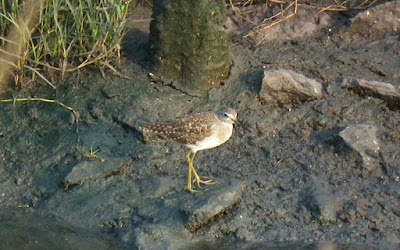Are we (Indians) doing enough for the environment? The answer is no.
Look at the nearby shop / mall. Feel the urge to buy some snacks? For your child, maybe?
What do we do after the packet is empty?
The normal Indian throws the waste (cigarette or chips packets / chocolate wrappers / gutka or supari sachets / plastics water and tea cups / tetrapacks and water bottles / thermocol plates) on the road: the best way to "get rid of waste". Some of us dump religious offerings into our rivers - wrapped in plastic bags. But pause and think for a moment whether you have really got rid of the waste?
It is still there, still on Planet Earth.
Well, who cares? The truth is, almost no one. Is there anything to care, though? The answer depends upon how you see the environment. Everyone learns in school that you must not litter any place. But no one adheres to this. But during discussions, the (empty) words come out:
We must protect the environment.
We must not litter our Earth.
We should carry any waste with us while traveling.
We should not throw plastic in (the) sea.
We should support car pooling.
Why this superficial-ness? Why do people not practise what they preach?
The answer lies in the education of people about the environment. They know what will happen if they don't protect the environment. Yet they won't protect. Confucius? was right when he said, "The fear of a thing is lost due to familiarity." You may harbour fear for a person walking towards you with a gun in hand. But, a member of the Rapid Action Force will not feel afraid if he were in your place. [No comparisons intended] That is because the forces are used to seeing weapons in hands of people in front of them.
Same case: children have become so familiar with the results of our actions that they no longer feel afraid about what will happen.
Why protect the environment?
Okay, why should we protect the environment? Why should we not litter the roads? Why should we not throw waste into the sea? Why should we support car pooling? Why should we protect Planet Earth?
Global warming. To speak briefly, it is the absorption of solar heat by carbon-dioxide, leading to rising temperatures and permanent worldwide flooding due to the melting of polar ice caps. Well, everyone knows that. It happens thanks to pollution. So support car pooling.
Littering. Non-biodegradable wastes will never decompose. They will lie on Earth for decades. Or maybe until science brings about a breakthrough. Animals may eat them and die. Non-biodegradables like plastic and rubber will release poisonous gases when burnt. They may cause soil pollution. Or, water pollution if thrown into seas. In addition to sea-quakes that cause tsunamis, these monster waves may also form because of blockages due to such wastes.Enough reasons to stop littering.
Biodegradable wastes will decompose, but release some really foul smelling gases. Eighty-five percent of plant compost may be released as gas. If you can use them as compost, why throw them around? You can just bury it into soil near plants.
Environmental degradation. Humans are sustained by the Environment. Environment with a capital E. Changing it too much can affect humans and all living things. This will affect biological diversity (or just biodiversity) and make living things more vulnerable to extinction. So, protect the environment and promote sustainable development.
Earth is the only planet (only? well, the only known planet) to sustain life. If we do not sustain Earth, we will not be sustained by Earth. I am sure Earth does not want to lose this status. If Nature can sustain humans, why cannot we sustain Earth? - nature's gift to us?
Well actually, we can and we must - before Nature strikes back.
Lets stop destroying the environment. I wish all of us the Best of Luck.
The force is with us.














